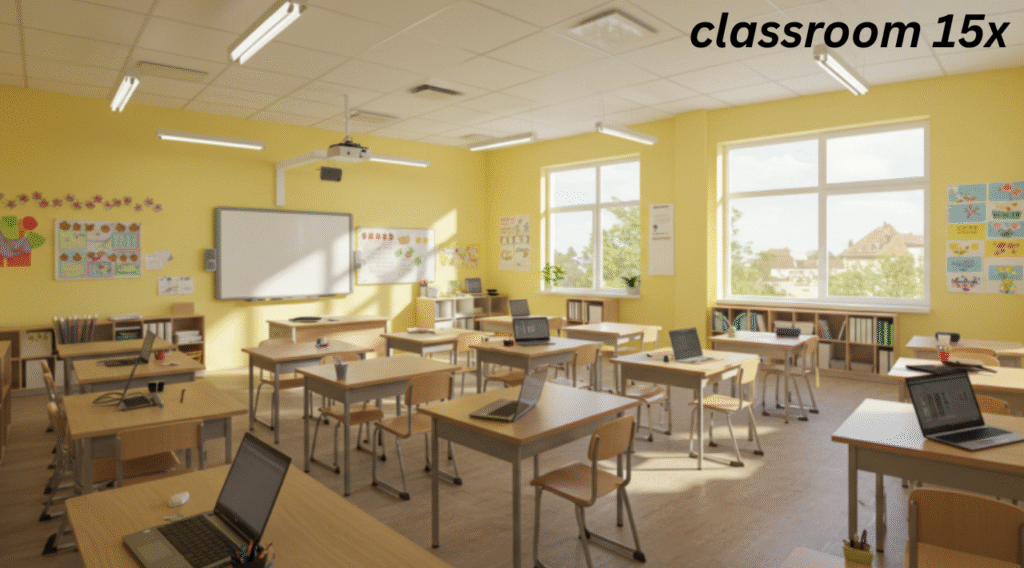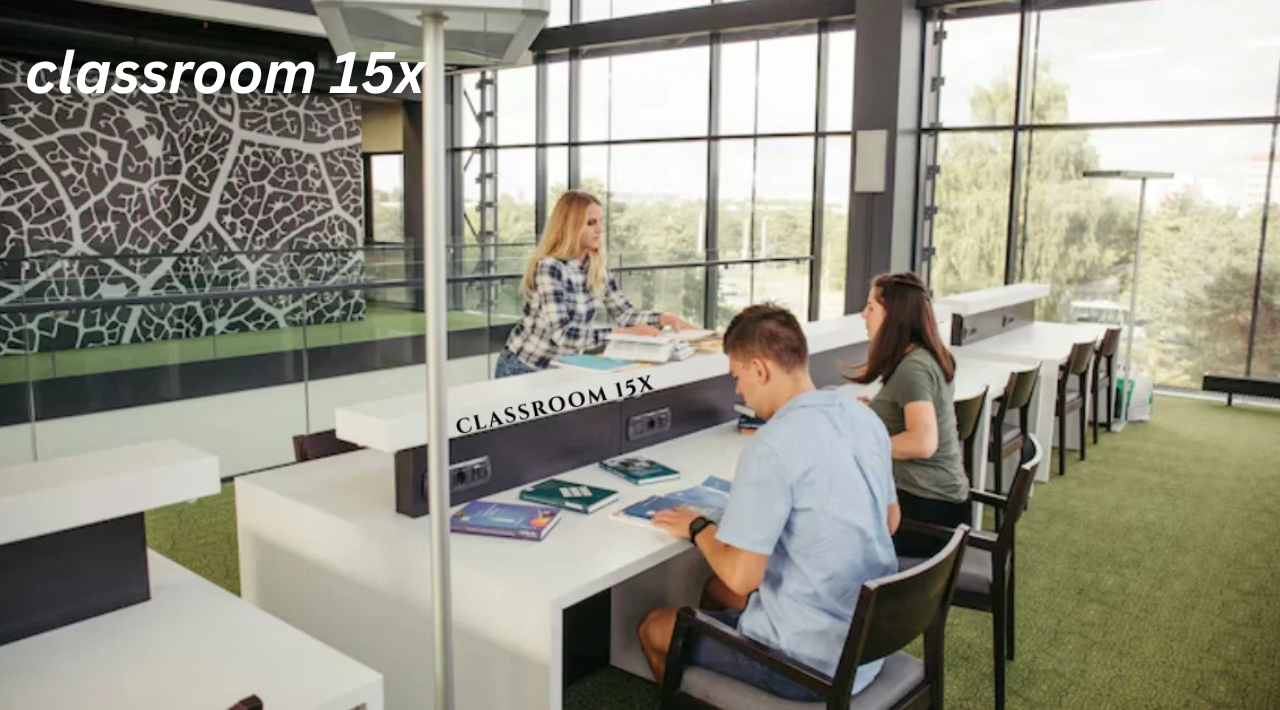In an era where technology evolves faster than curriculums can adapt, the traditional classroom model faces unprecedented challenges. Educators and institutions worldwide are striving to create more engaging, inclusive, and impactful learning environments. Enter Classroom 15x, a groundbreaking concept promising to revolutionize how we perceive and deliver education. By harnessing the multiplier effect of smart design, technology integration, and student-centric pedagogy, Classroom 15x aims to amplify learning outcomes exponentially—fifteen times, to be exact.This article unpacks the Classroom 15x framework in detail—from its origins and theoretical backbone to practical implementation strategies. Whether you’re an educator, school administrator, or policy-maker, understanding Classroom 15x can help you future-proof your educational practice. Ready to elevate your classroom? Let’s explore the possibilities.
What is Classroom 15x?

Definition and Concept
At its core, Classroom 15x is a strategic approach to education designed to increase student performance, engagement, and knowledge retention by a factor of 15. It’s not about overloading learners or teachers—it’s about optimizing every aspect of the learning process. By combining advanced pedagogy, interactive technologies, and personalized learning experiences, this model creates exponential improvements in student outcomes.
Rather than being a fixed curriculum or specific teaching style, Classroom 15x acts as a flexible framework adaptable to various educational contexts. It’s driven by the idea that small, smart changes across curriculum design, teaching methodology, and technology use can create a compounding effect. Think of it as the “compound interest” of education—where each improvement amplifies the impact of others.
The Science Behind It
The effectiveness of Classroom 15x is rooted in educational psychology and learning science. Studies have shown that active learning, frequent feedback, and multimodal instruction significantly boost knowledge retention. Cognitive load theory also emphasizes minimizing unnecessary mental effort while maximizing meaningful engagement. When combined with technology—like AI-driven adaptive assessments—these practices scale in effectivenessAdditionally, the 15x multiplier aligns with the Pareto Principle (80/20 Rule): 20% of inputs (strategies, tools, methods) often generate 80% of outcomes. Classroom 15x seeks to identify and replicate those high-impact interventions across the entire student body, producing consistently high performance regardless of background or learning style.
Core Components of the Classroom 15x Model
Student-Centered Learning Environments
Student agency lies at the heart of Classroom 15x. Traditional lectures often fail to cater to diverse learning needs. In contrast, Classroom 15x prioritizes personalized learning paths, where students take ownership of their education. This includes choice-based projects, adaptive pacing, and collaboration across interests.
By implementing differentiated instruction, educators can target each learner’s zone of proximal development—the sweet spot between what they can do alone and what they can achieve with guidance. Interactive group work, self-assessments, and mentorship opportunities empower students to become co-creators of knowledge, rather than passive recipients.
Technology Integration
Modern classrooms can’t afford to ignore the digital revolution. From smartboards and AI tutors to VR simulations, Classroom 15x encourages seamless technology integration. But tech alone isn’t enough—it’s the purposeful use of these tools that drives real change.
For example, blended learning models combine in-person instruction with online modules, enabling students to learn anytime, anywhere. Virtual reality (VR) brings abstract concepts to life, while learning management systems (LMS) track progress and provide real-time analytics. Such tools help educators intervene earlier and more effectively, tailoring support to individual needs.
Teacher as Facilitator, Not Lecturer
In a 15x classroom, the role of the teacher shifts from being the sole source of knowledge to a facilitator of learning experiences. This paradigm encourages teachers to coach, guide, and mentor students as they navigate complex problems and projects.
This shift requires a new set of skills—empathy, adaptability, and digital fluency. Professional development programs focused on inquiry-based learning and technology integration are crucial. Teachers become collaborators who design immersive, inquiry-driven experiences that spark curiosity and critical thinking.
Data-Driven Decision MakingClassroom 15x thrives on continuous feedback loops. By leveraging analytics from quizzes, participation, and learning tools, educators can make informed decisions. This data doesn’t just assess learning—it shapes it.
For example, if analytics show a student struggling with a concept, the system can recommend targeted resources or adjust the lesson pace. Educators can group students based on learning profiles or identify which instructional techniques yield the best outcomes. This dynamic, evidence-based teaching ensures that no student is left behind.
Implementation Strategies for Schools and Educators
Planning and Infrastructure
The first step toward Classroom 15x is reevaluating the physical and digital learning environment. Classrooms should be flexible, modular spaces that encourage collaboration and creativity. Digital infrastructure—like reliable Wi-Fi, cloud-based tools, and interactive devices—is equally essential.
Schools must also plan for long-term scalability. This includes investment in maintenance, cybersecurity, and platform upgrades, ensuring that the system grows with student needs. Pilot programs, supported by data collection, can provide proof-of-concept before full-scale adoption.
Curriculum Design and Adaptation
Classroom 15x thrives on interdisciplinary and project-based learning. Curriculums should be adaptable, competency-based, and outcome-driven. Students should have opportunities to connect academic concepts to real-world challenges—through simulations, case studies, or entrepreneurial projects.
Moreover, incorporating soft skills like critical thinking, collaboration, and digital literacy is essential. These skills are future-proof and help prepare students for jobs that don’t even exist yet.
Training and Professional Development
To lead a Classroom 15x transformation, educators need consistent professional development. This includes workshops on digital tools, pedagogy, student engagement, and data literacy. Peer mentoring, online certifications, and collaborative planning sessions also help build a culture of innovation.
Ultimately, teacher mindset is just as important as skillset. Encouraging experimentation, reflection, and collaboration helps foster a resilient teaching community ready to embrace change.
Stakeholder Engagement
For Classroom 15x to succeed, it must be community-driven. Engaging parents, school boards, and local partners fosters trust and buy-in. Hosting workshops, info sessions, and open forums allows stakeholders to understand and contribute to the model’s success.
Public-private partnerships can help schools access funding and resources. Government bodies, NGOs, and tech firms can provide infrastructure support, training, or even curriculum development assistance.
Real-World Case Studies and Success Stories
Innovative Schools Embracing Classroom 15x
Around the globe, schools are reaping the rewards of Classroom 15x. For instance, Finland’s education system emphasizes creativity, flexibility, and student agency—hallmarks of the 15x model. In the U.S., schools like High Tech High in California and Summit Public Schools have seen massive gains in student engagement and performance using personalized, project-based frameworks.
These schools report improved graduation rates, higher college admission levels, and increased student satisfaction. Many students also outperform their peers in traditional schools on standardized tests, despite spending less time on direct instruction.
Lessons Learned and Challenges Faced
Implementing Classroom 15x isn’t without hurdles. Initial costs, resistance to change, and unequal access to technology are common barriers. However, schools that overcome these challenges often cite incremental rollouts, clear communication, and robust training as key enablers.
Another lesson is that one size does not fit all. Each school community must adapt the framework to its unique cultural, economic, and pedagogical context. Flexibility and a commitment to iterative improvement make all the difference.
Conclusion
Classroom 15x is not just a buzzword—it’s a blueprint for the future of education. By focusing on personalized learning, technology integration, educator transformation, and data-informed practices, this model unlocks new levels of student achievement and classroom efficiency. In a world that demands agile thinkers and lifelong learners, the Classroom 15x approach ensures education isn’t just effective—it’s extraordinary.
The journey to a 15x classroom starts with a mindset shift. It invites educators to be innovators, students to be explorers, and schools to be incubators of future-ready skills. The time to act is now.
FAQs
What does the “15x” stand for in Classroom 15x?
It refers to the potential to amplify student learning outcomes by 15 times through strategic educational enhancements.
Can Classroom 15x be applied in underfunded or rural schools?
Yes, though it may require creative solutions like mobile technology, community involvement, and phased implementation.
What technologies are essential for implementing Classroom 15x?
Key tools include learning management systems (LMS), smartboards, AI-based assessment tools, and high-speed internet.
How can teachers transition to this model without burnout?
By receiving continuous training, peer support, and gradually integrating new strategies rather than adopting all at once.
Is Classroom 15x suitable for all grade levels?
Yes, the framework is flexible and can be adapted from early childhood education to secondary and post-secondary levels.
You May Also Read: https://zibbusiness.com/financial-updates-aggr8finance/





